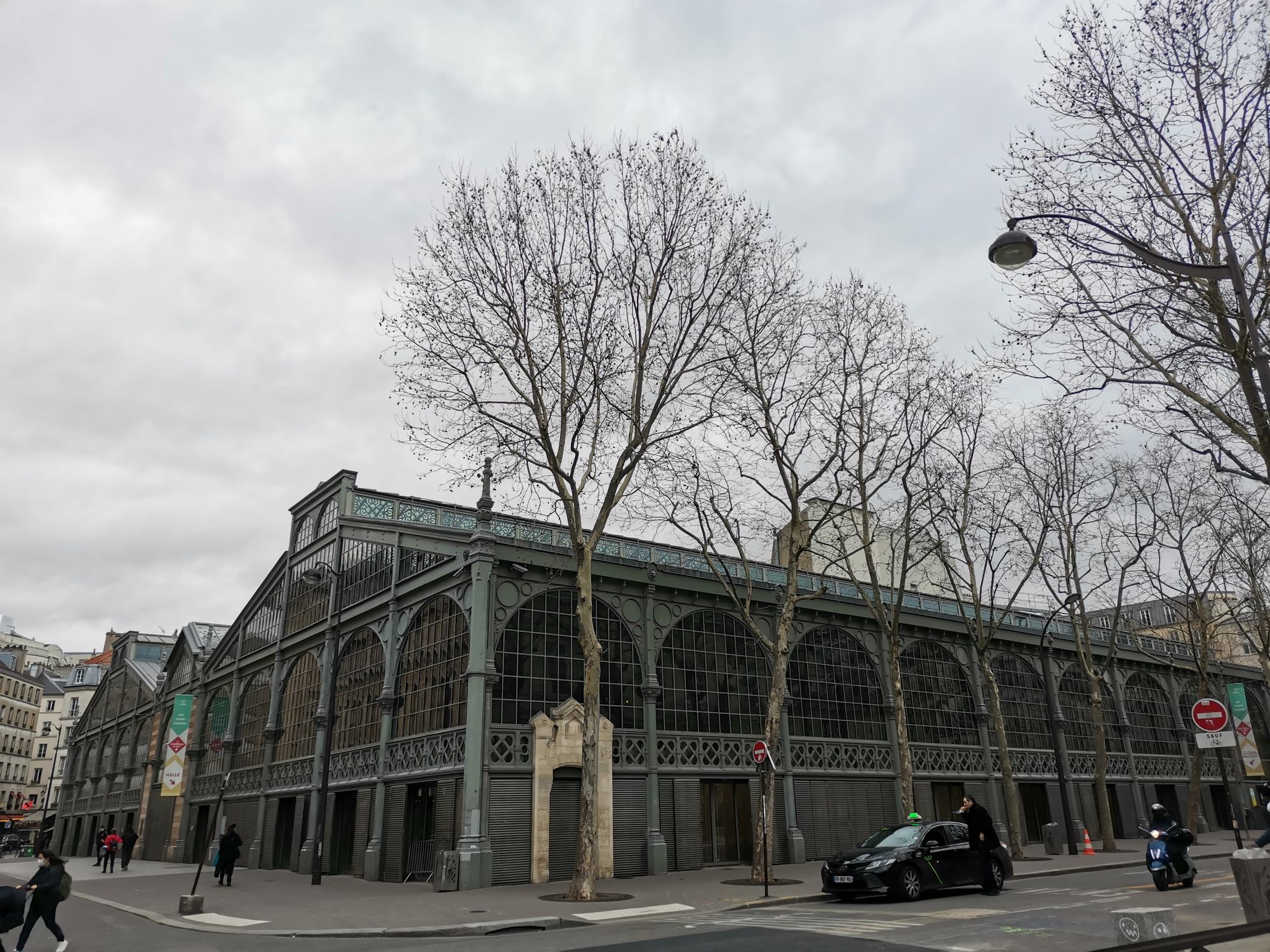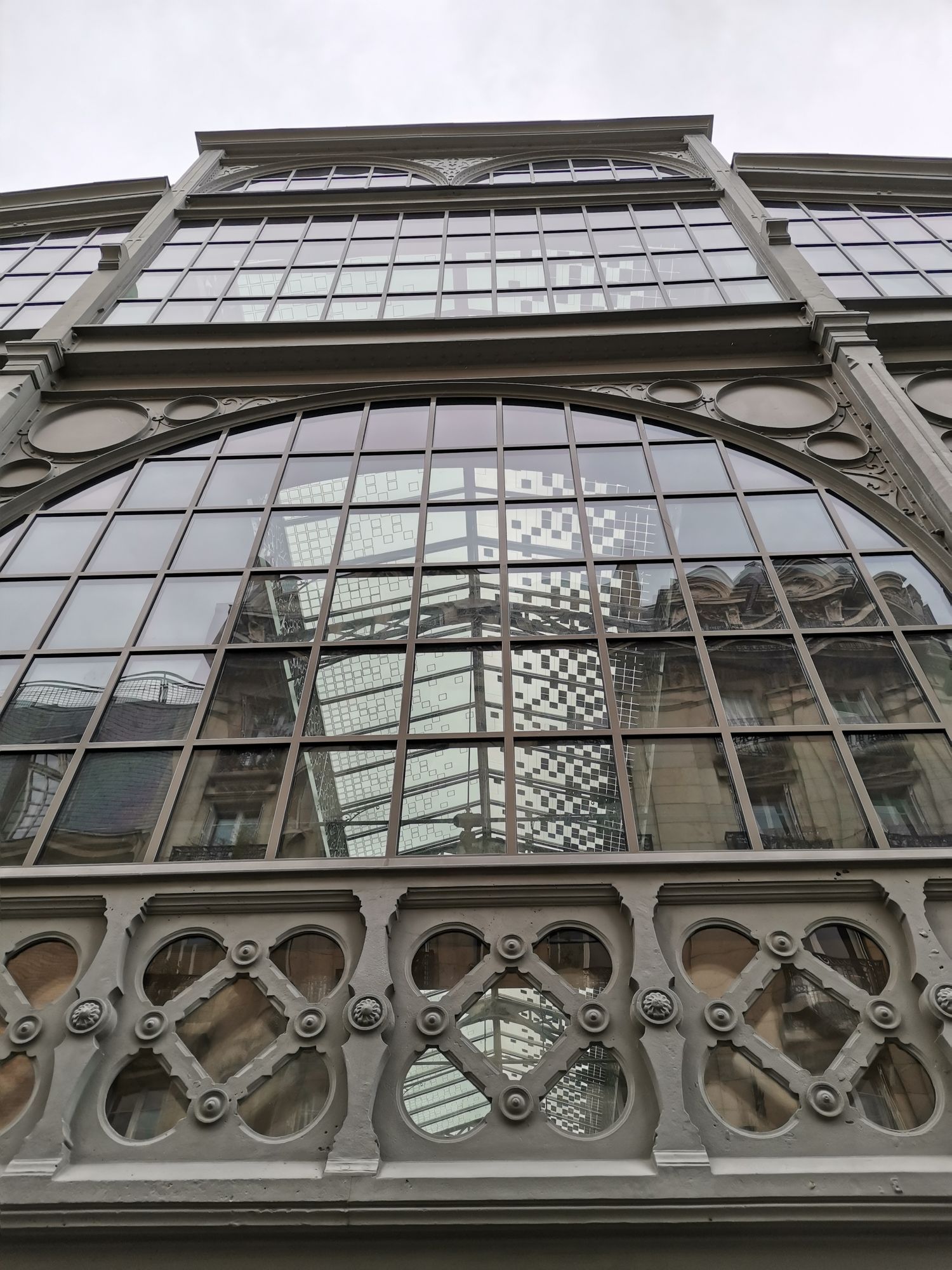The Temple tile

What is the Carreau du Temple and what is its history?
The Carreau du Temple is a former covered market typical of Parisian metal architecture from the late 19th century. It was built in 1863 in the northern Marais district of Paris. Originally, it was primarily a clothing market and played an essential role in the Paris fashion trade. Over time, however, its market activity declined.
How was the Carreau du Temple saved from demolition?
The Carreau du Temple came close to being demolished on several occasions, but was preserved thanks to the mobilization of local residents. In 1982, it was listed on the supplementary inventory of historic monuments, reinforcing its protection.
Who owns the Carreau du Temple and how has it evolved over the years?
The Carreau du Temple is owned by the City of Paris. Over the years, its future and vocation have been rethought following a public consultation in 2004. Today, it is a 6,500 m² multi-purpose facility, comprising a large hall, a 250-seat auditorium, a gymnasium, a dance studio and a dojo. The Carreau du Temple offers a cultural, artistic and sporting program open to all.
What events and activities take place at the Carreau du Temple?
The Carreau du Temple is home to over 50 associations and 40 major cultural, sporting and lifestyle events. It offers a varied artistic program, including highlights and regular events.
Who is the general manager of Carreau du Temple?
Sandrina Martins is the general manager of Carreau du Temple.
Where is the Carreau du Temple located and what are the surrounding structures?
The Carreau du Temple is just a few meters from the town hall of the 3rd arrondissement of Paris, separated by rue Perrée. It is also close to l'École supérieure des arts appliqués Duperré, on the other side of rue Eugène-Spuller, and to square du Temple. The site is served by metro line 3 at the Temple station.
What were the historical uses of the Carreau du Temple site?
The Carreau du Temple site was once the center of the former enclos du Temple, which housed a market dating back to the Middle Ages.
This market was famous for its goldsmiths, and by the end of the 18th century could accommodate up to 4,000 people. It had the right of asylum and exceptional privileges, such as the franchising of trades. In addition, it was the site of a busy fair before 1789, selling a variety of goods, including furs and haberdashery.
What historical events are associated with the Carreau du Temple, such as the Temple market cavalcade?
In the 19th and early 20th centuries, the Marché du Temple organized an annual carnival cavalcade that was very popular in Paris. The market elected a queen for Mi-Carême, and festive parades were held throughout the city.
What are the current buildings of the Carreau du Temple?
In 1863, the former halles and Rotonde du Temple were demolished and replaced by six modern pavilions in cast iron, glass and brick, designed by architects Ernest Legrand and Jules de Mérindol. Today, two pavilions remain, forming a vast hall, which is the current site of the Temple market.
How has the Carreau du Temple changed in 2000 and 2010?
Between 2000 and 2010, the Carreau du Temple underwent a major reorganization. An ideas competition was launched in 2003, followed by a local vote to select the final project. Architect Jean-François Milou was entrusted with the renovation, which included the creation of an auditorium, sports areas, and a space for artistic and cultural events.
What are the different spaces and activities on offer at Carreau du Temple?
The Carreau du Temple features a variety of spaces, including the Halles du Carreau du Temple, a 250-seat auditorium, multi-purpose dance and sports studios, a meeting space, a bar-restaurant, and more. Activities include courses, workshops, artistic events, fashion shows, art fairs, exhibitions, sports competitions, artistic residencies, and support for emerging artists.
What is the Carreau du Temple's business model?
The Carreau du Temple operates on a public-private economic model. It is operated by a local public company, owned by local authorities. The City of Paris pays a compensatory subsidy for public service activities. The Carreau du Temple's own resources cover most of its operating costs.
What is the capacity of the different areas of the Carreau du Temple?
Les Halles du Carreau du Temple can accommodate up to 3,000 people for standing concerts, 1,500 for cocktail parties/evenings, 1,000 for plenary conferences, and 800 for seated dinners. The auditorium seats 250. In addition, there are areas dedicated to sporting, artistic and cultural activities, as well as a permanent bar-restaurant.
Le Carreau du Temple in brief
A former covered market typical of late 19th-century Parisian metal architecture, built in 1863 in the northern Marais district, the Carreau du Temple was a mecca for the clothing trade until its gradual closure in the 1980s. In 1904, it was the venue for the first Paris fashion show. Thanks to the mobilization of local residents, the Carreau du Temple was saved from several demolition projects, until its inclusion in the supplementary inventory of historic monuments in 1982. Owned by the City of Paris, the future of the Carreau du Temple was the subject of the first citizen consultation in Paris in 2004, enabling the redefinition of its project and architecture. Today, it is a 6,500 m² multi-purpose facility comprising a large hall, a 250-seat auditorium, a gymnasium, a dance studio and a dojo, offering a cultural, artistic and sporting program open to all.
For news and events at the Carreau du Temple, visit the Carreau du Temple website.

Back to historical heritage of the Marais